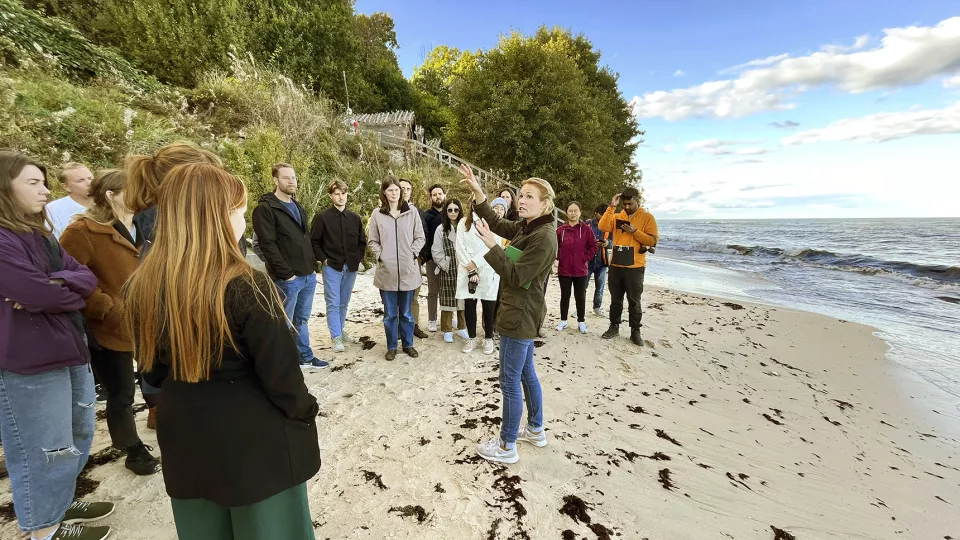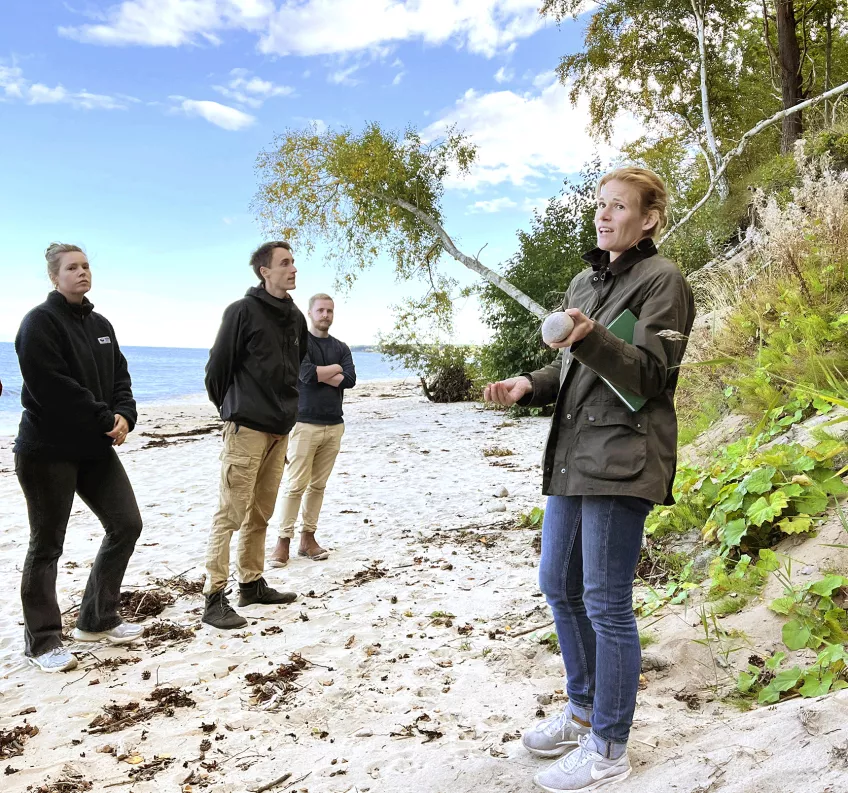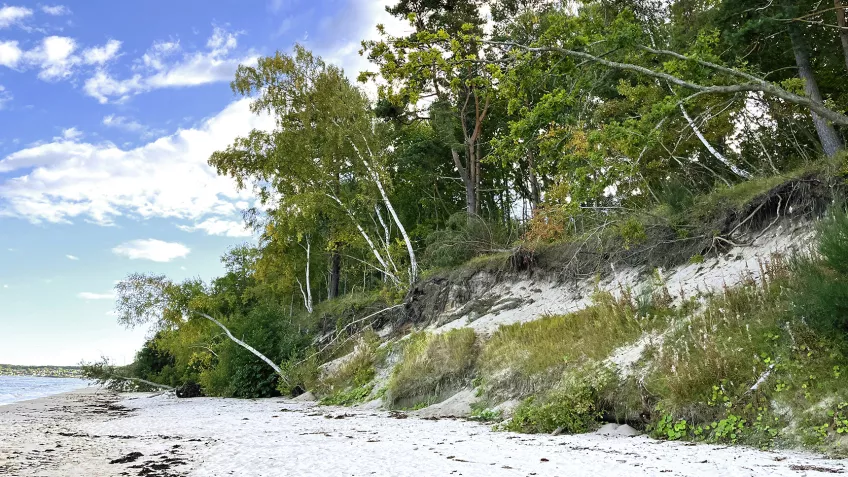Someone who knows a lot about changes to the Skåne coastline is Caroline Hallin. She is a coastal engineer whose research focuses on erosion, storm surges and nature-adapted coastal protection at the Faculty of Engineering (LTH).
Caroline Hallin finds herself on the narrow coastal strip of Knäbäckshusen together with doctoral students from the interdisciplinary ClimBEco Graduate Research School. The excursion will give the doctoral students greater knowledge of eroding beaches and which nature-adapted solutions are suitable to use.
Erosion also in the water
“Knäbäckshusen’s eroding beach is a clear example of how coastlines change over time. And it is not only the visible beach that is affected, erosion can also occur in the water, making the sea close to the beach deeper,” she says.
Erosion is when sand disappears from one place and moves to another. The landscape is formed out of this continuous process that happens as soil and rock are ground down by wind, water and waves. Erosion impacts biodiversity, buildings close to the coast and infrastructure in the affected area.
But how can the coast be protected in the future? And what expertise is needed to find the right solutions?
Caroline Hallin argues for nature-based strategies, which have as little impact on the nature and cultural heritage of an area at threat from erosion.
“One method is beach nourishment and the strengthening of sand dunes that are used to protect the coast. Sand dunes are extremely robust and are an effective form of protection. If dunes are of sufficient height and volume, the coast will be pretty well-protected,” she says.
An accelerating problem
Securing our coasts is a necessity, says Caroline Hallin.
“Rising sea levels are accelerating the problem, and sea levels are rising, that is a fact. We must be ready to deal with storm surges when they come.”
People who live near the coast are especially vulnerable to the movements of the sea. Historically, the Skåne coastline has been affected by occasional storms that have caused houses to collapse and fishing villages to be abandoned.
“This method is known as retreat, and it was done here in Knäbäckshusen in the 1950s, but due to another reason. Houses were moved here from Ravlund near Kivik in order to make room for a military practice range. But now, parts of the village will have to move again due to erosion. The little chapel was recently closed because of the considerable erosion of the beach,” says Caroline Hallin.
Research in a wide context
The doctoral students walking in the estuary with Caroline Hallin gain expertise in climate, biodiversity and ecosystem issues through the graduate school. They come from a broad range of backgrounds, from political science to geography and nuclear physics – and they come from different faculties within Lund University, the University of Gothenburg and Chalmers University of Technology.
Cheryl Sjöström is a coordinator for the graduate school. In relation to the school’s interdisciplinary nature, she says:
“As a researcher, it is easy to stick to one’s own networks and issues related to one’s specific field of research. But here, they can place their research in a wider context. It makes them better equipped to handle the challenges that face our society, such as biodiversity and coastal erosion.”



